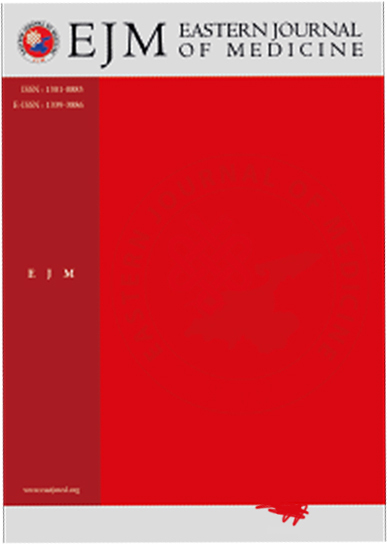Maternal pre-labor hematocrit level: Does it affect fetal outcomes ?: A case-control study
Fahri Burcin FIRATLIGIL1, Arife Akay2, Mehmet Kaya3, Yildiz Akdas Reis4, Murat Levent Dereli5, SADULLAH ÖZKAN6, Elif Gülşah Diktaş7, RAHMI SINAN KARADENIZ4, Yaprak Engin-Ustun41Department of Perinatology, Ankara Bilkent City Hospital, Ankara Turkey2Department of Obstetrics and Gynecology, Bingol Maternity And Children Hospital, Bingol, Turkey
3Department of Obstetrics and Gynecology, Ankara Etlik City Hospital, Ankara, Turkey
4Department of Obstetrics and Gynecology, Ankara Etlik Zubeyde Hanim Womens Health Education And Research Hospital, Ankara, Turkey
5Department of Perinatology, Denizli State Hospital, Denizli, Turkey
6Department of Perinatology, Sivas Numune Hospital, Sivas, Turkey
7Special Clinics of Obstetrics and Gynecology, Ankara, Turkey
INTRODUCTION: Iron deficiency anaemia is a widespread nutritional anaemic diseases worldwide. Recent studies have shown that anemia during pregnancy can have a negative impact on perinatal and maternal outcomes, although the correlations vary depending on the severity of the anemia. Therefore, we will evaluate the fetal outcomes of the pregnant women, whom we divided into three groups according to the hematocrit (HTC) value based on fetal ultrasound findings, birthweight (BW) and Apgar scores.
METHODS: The study included nulliparous women with singleton pregnancies whose entire follow-up and treatment were carried out in a tertiary referral hospital and whose pregnancy was completed in the same hospital. The study participants were assigned to one of three groups depending on their HTC value. The patients with an HTC value below 30% were in group I; the patients with an HTC value between 30% - 36% were in group II; the patients with an HTC value of more than 36% were in group III. We examined demographic parameters, Apgar scores, BW and admission to neonatal intensive care unit.
RESULTS: 578 pregnant women were included in the study and all participants were nulliparous. There were no significant differences between the three groups in terms of demographic data. There were significant differences in biparietal diameter, abdominal circumference and BW.
DISCUSSION AND CONCLUSION: Women have different nutritional needs throughout their lives - especially before and during pregnancy, when sensitivity to nutrients is at its highest -. Ensuring a nutritious diet and adequate care and education for women is crucial for the mothers and newborns.
Keywords: anemia, hematocrit, newborn, pregnancy
Manuscript Language: English














